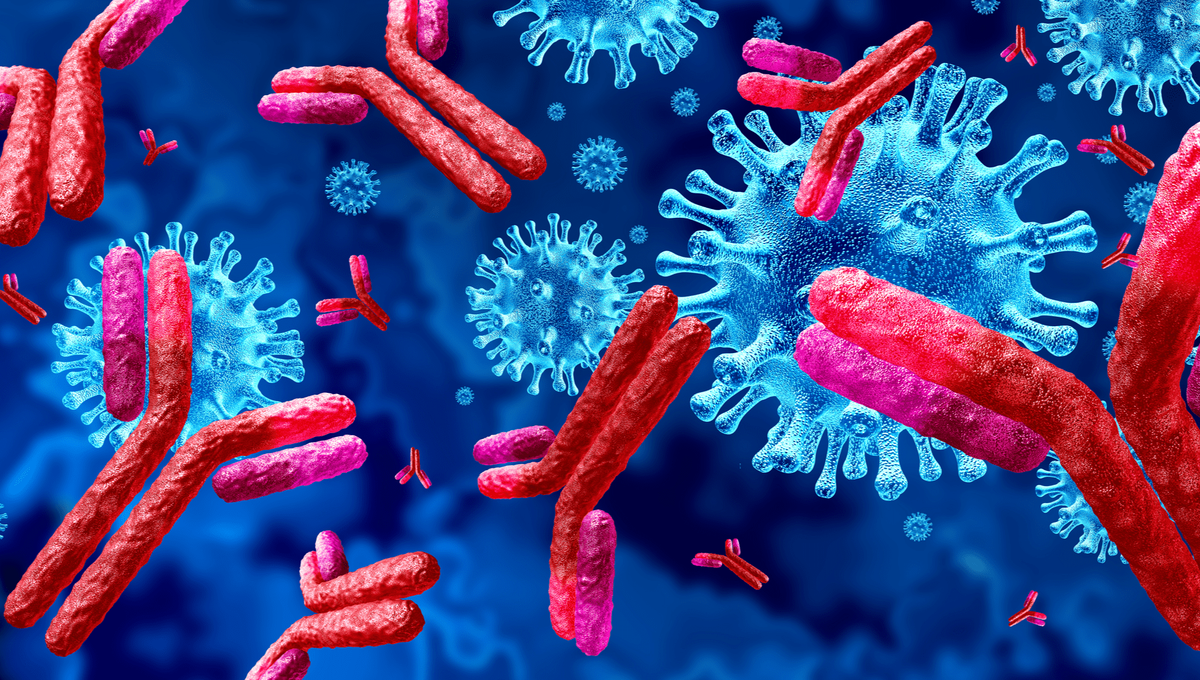Antibodies, also known as immunoglobulins, are Y-shaped proteins produced by plasma cells that are used by the immune system to identify and neutralize foreign objects like bacteria and viruses. Antibodies recognize a unique molecule of the harmful foreign substance, called an antigen, and this binding between antibody and antigen helps eliminate these pathogens from the body. In this article, we will explore antibodies in more depth looking at their structure, function and role in human health and disease.
The Structure of Antibodies
Antibodies are made up of basic units called immunoglobulin which consists of two identical heavy chains and two identical light chains held together by disulfide bonds. The light chains can be of two major types called kappa and lambda. At one end of the Y-shaped antibody there are antigen binding sites consisting of parts of the light and heavy chains highly variable in sequence which allows antibodies to recognize an almost limitless number of antigens.
The other end consists of constant regions of the heavy chains that interact with other components of the immune system. The constant regions determine the class or isotype of the antibodies like IgG, IgM, IgA, IgD and IgE which have different immune functions. The combination of variable and constant regions allow antibodies to specifically bind pathogens bearing particular antigens and enlist other immune cells to eliminate them.
Role of Antibodies in Immunity
Antibodies play a vital role in both innate and adaptive immunity. Upon initial exposure to a foreign antigen, memory B cells start producing antigen-specific antibodies which can neutralize pathogens by blocking receptors needed to infect cells or mark them for destruction by processes like opsonization.
This adaptive humoral immune response leads to rapid and massive production of high affinity antibodies upon re-exposure to the same pathogen providing long-lasting immunity. Different antibody classes act at different stages - IgM helps in early infection while IgG provides lasting protection. Secretory IgA in mucus offers immunity at body surfaces.
Antibodies also activate the complement system proteins for direct killing of pathogens and attract other immune cells like macrophages and neutrophils to the site of infection through a process called antibody-dependent cellular cytotoxicity.
Monoclonal Antibodies
In healthcare, monoclonal antibodies directed against specific antigens on infectious agents and cancer cells have revolutionized treatment. Developed through somatic cell hybridization, monoclonal antibodies can be mass produced that are all identical making them highly consistent and potent. They find use as diagnostic aids, specialized reagents and immunotherapies. Examples include bevacizumab to treat various cancers and rituximab against lymphomas.
Antibody Testing
Detection of antibodies play an important role in clinical and research applications. ELISA, Western blot and Immunofluorescence assays are used to test for exposure to pathogens like HIV and diagnose autoimmune disorders. Antibody titers post-vaccination and during infection help monitor immune response and recovery. Rapid diagnostic tests can detect IgM antibodies indicating recent exposure and IgG antibodies suggesting past infection. Serial antibody testing aids contact tracing and epidemiological studies.
Antibodies in Disease
Sometimes antibodies themselves may cause harm under certain disease conditions. Autoantibodies produced against self-antigens underlie autoimmune diseases like rheumatoid arthritis, systemic lupus erythematosus, Graves’ disease and myasthenia gravis. Allergies occur due to IgE antibodies to otherwise harmless allergens. Transfusion reactions and rejection of transplanted organs can result from pre-existing alloantibodies. Antibody deficiencies predispose to recurrent infections. Therapies aim to remove pathogenic antibodies or modulate the immune response.
In summary, antibodies are remarkably versatile Y-shaped proteins central to immune protection against infection. From diagnosis to treatment, biomedical research continues tapping into their potential through innovative techniques. Understanding the intricate workings of humoral immunity mediated by antibodies offers fascinating insights relevant to both health and disease.
Get more insights on this topic:
https://www.dailyprbulletin.com/introduction-understanding-antibodies/



